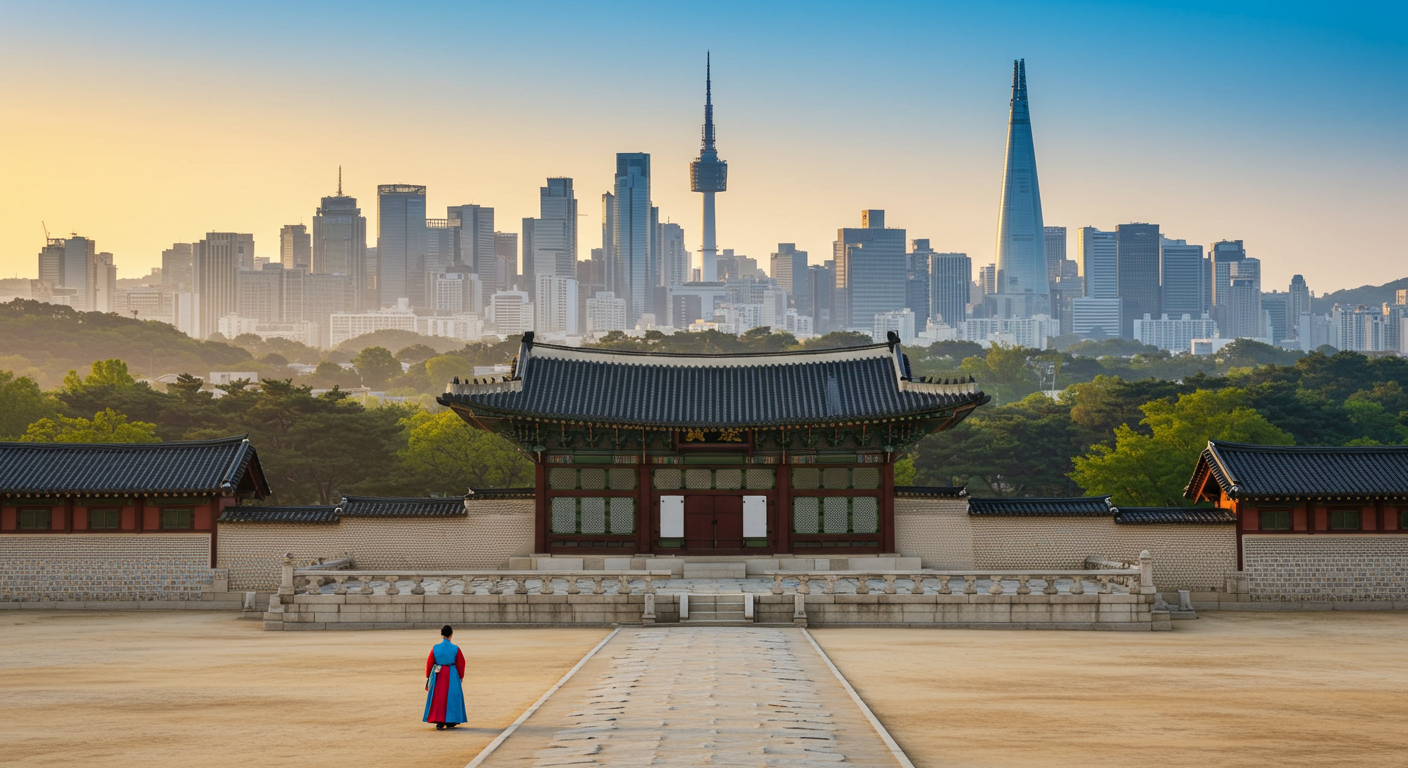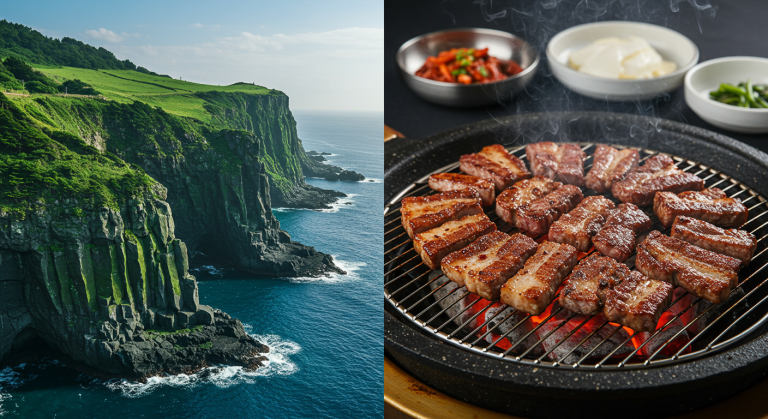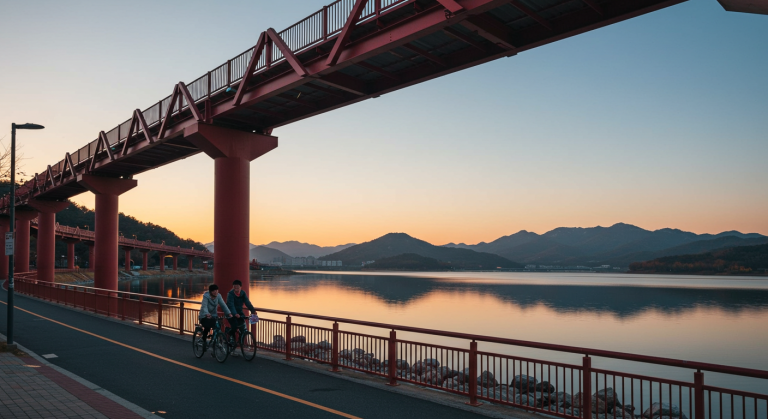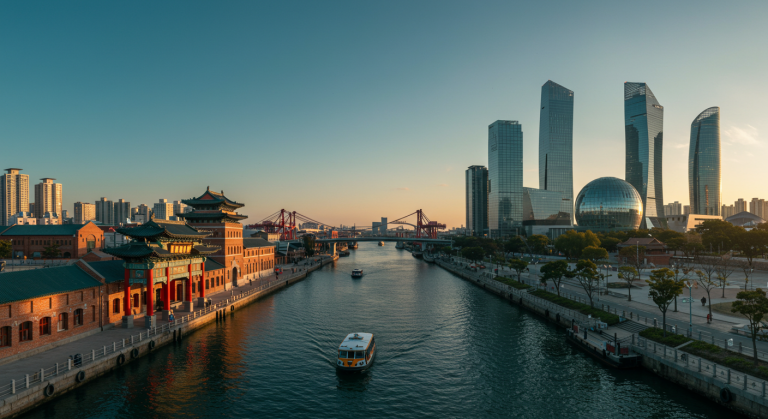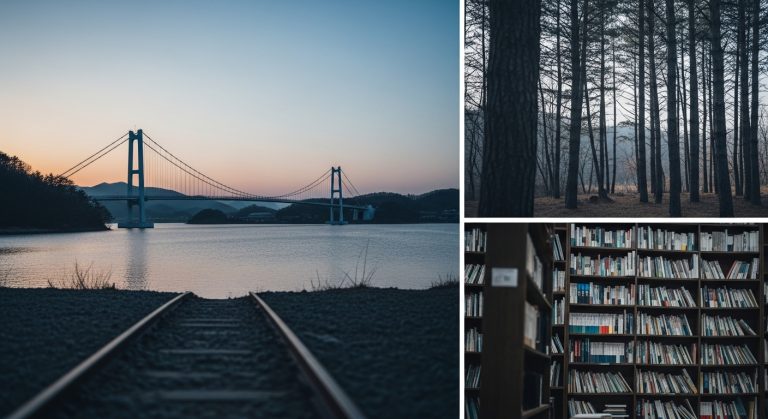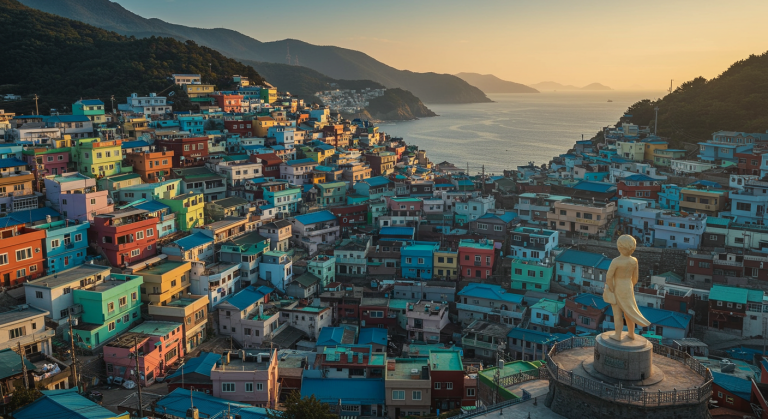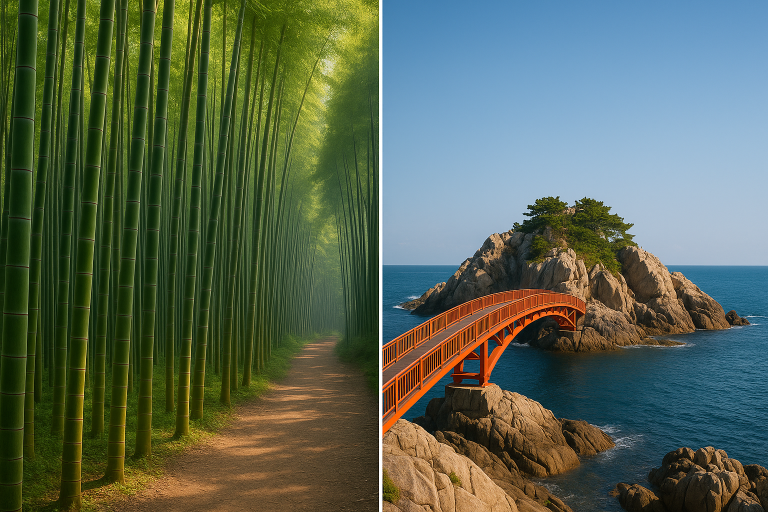Your Essential Guide to Jeonju: Tips for Visiting Korea’s Traditional UNESCO City
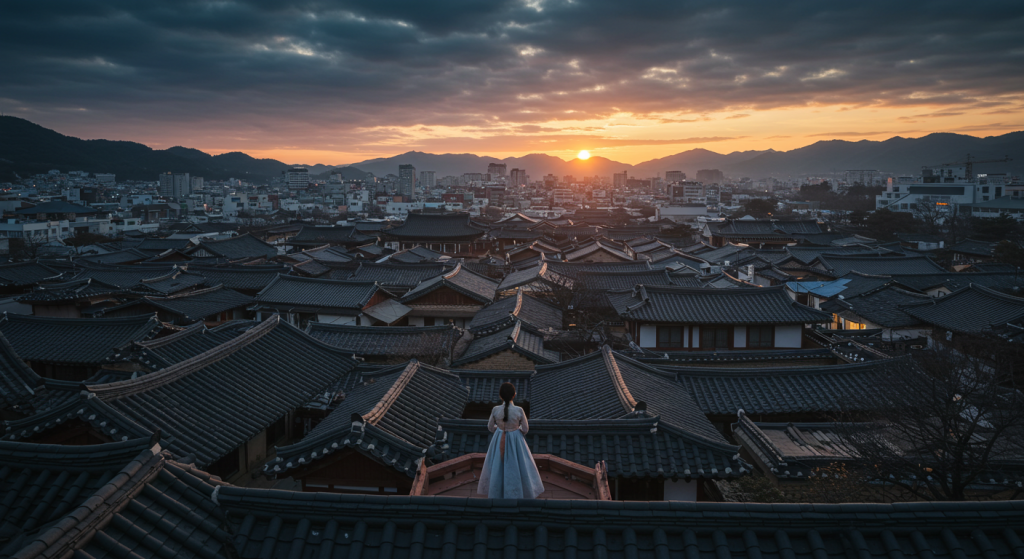
We’ll dive into the authentic tastes of UNESCO City of Gastronomy—from legendary Bibimbap to Makgeolli Alley—explore hidden gems like Jaman Mural Village, and guide you through immersive cultural experiences, historical sites, and local artisan crafts. Plan your most fulfilling trip to the Joseon Dynasty’s spiritual capital with this ultimate, detailed guide.
Have you ever felt that travel advice sometimes only scratches the surface?
You see the stunning photos of a destination’s main attraction, you book your trip, and then you realize there’s so much more beneath the initial layer. I know I have!
For many travelers, Jeonju (전주), the historical capital of the Joseon Dynasty and the cultural heart of Korea’s Jeolla region, immediately conjures up images of the magnificent Hanok Village.
While the Hanok Village is undeniably a treasure—a labyrinth of over 800 traditional Korean houses (hanoks) with gracefully curved eaves—to limit your Jeonju experience to just that village is a huge disservice to the city’s profound depth.
Jeonju is famously known as a UNESCO City of Gastronomy, a title it earned not just for its famous bibimbap, but for a centuries-old culinary tradition that infuses every single dish with the region’s rich agricultural heritage.
It’s a city where history isn’t tucked away behind ropes in a museum, but is lived and breathed in every alleyway, every craft workshop, and every steaming bowl of food you encounter.
This isn’t just another checklist of tourist spots; this is your deep-dive manifesto into the soul of Jeonju.
We’re going to venture out from the main gates, peel back the layers of history, indulge in the world-class food scene, and uncover the quiet, hidden corners where the locals truly thrive. Ready to experience the Jeonju that the guidebooks often miss? Let’s go! 🚀
Jeonju’s Heartbeat: Deconstructing the Hanok Village Experience
The Jeonju Hanok Village (전주 한옥마을) is the starting point for a reason, but the trick is learning how to navigate it beyond the main street’s photo-op frenzy.
It serves as a living museum, preserving the unique architectural style of the Joseon Dynasty, where the curved, tiled roofs (called *giwa*) are particularly distinct from other traditional Korean villages.
I recall my first visit, feeling overwhelmed by the crowds, until I ducked into a smaller, quieter alleyway just a block off the main thoroughfare.
Suddenly, I found myself in a residential area, where the sounds were only the gentle rustling of paper doors (*hanji*) and the occasional muted conversation of residents. That’s when the true magic of the village hits you.
Must-See Historical Gems: Royalty, Faith, and Panoramic Views
The village isn’t just about beautiful houses; it contains monuments of massive historical and cultural weight that demand a thoughtful visit.
-
◆
Gyeonggijeon Shrine (경기전): This is arguably the most critical site. It was built in 1410 to house the portrait of King Taejo, the founder of the Joseon Dynasty. The grounds are expansive, offering a peaceful retreat with towering bamboo groves and beautiful walkways.
Don’t miss the **Royal Portrait Museum** inside the complex, which recently reopened after a long refurbishment and offers incredible insights into Joseon royalty. -
◆
Jeondong Catholic Church (전동성당): Just outside the Hanok Village, this architectural masterpiece perfectly blends Western Romanesque style with Eastern influences.
Built between 1908 and 1914, it stands on the site where Catholic martyrs were executed, giving it a profound historical and spiritual significance. The brick structure provides a stunning contrast to the wooden *hanoks*. -
◆
Omokdae Pavilion (오목대): A short, easy climb up a hill near the Hanok Village, Omokdae is where King Taejo celebrated a victory over the Japanese forces before founding the dynasty.
The view from the pavilion is what you really go for: a breathtaking, panoramic vista of the entire Hanok Village’s sea of gray-tiled roofs. It’s truly a must-do for sunset photos!
Immersive Tradition: Hanbok Rental and Etiquette
Renting a Hanbok, the traditional Korean attire, is a hugely popular activity and definitely adds a fun, temporal dimension to your visit.
It’s an experience that makes you feel like you’ve truly stepped back in time, and the colorful photos against the traditional backdrop are unbeatable.
Most rentals cost between ₩10,000 and ₩30,000 for a 2-4 hour period, depending on the complexity of the garment (standard vs. royal/special).
I highly recommend going for the “fancy” Hanbok; the higher-quality fabrics and elaborate designs truly stand out in photos.
- **Early Bird Gets the Best Dress:** Go in the morning right when shops open to get the best selection and avoid long waits for hair styling and changing rooms.
- **Respect the Sites:** While Hanbok grants free entry to some places (like Gyeonggijeon), remember you’re wearing traditional attire. Be mindful of not being overly loud or disruptive, especially inside quiet shrines and temples.
- **The Hair Accessory is Key:** Don’t skip the hair braiding and accessories (like a *daenggi* ribbon or *binyeo* hairpin). They complete the transformation!
Structured Knowledge: Comparing Hanok Village Museums
To fully appreciate the depth of Jeonju’s traditional culture, a stop at its specialized museums is essential. They offer a tangible connection to the Joseon era’s intellectual, artistic, and daily life.
| Museum Name | Core Focus | Why Visit? |
|---|---|---|
| Royal Portrait Museum (어진박물관) | Portraits (*Eojin*) of Joseon Kings, primarily King Taejo. | Offers a rare, intimate look at the monarchy and the artistry of royal portraiture. (Located inside Gyeonggijeon.) |
| Traditional Liquor Museum (전주 전통술박물관) | History, preparation, and types of traditional Korean rice wines (*Makgeolli*, *Cheongju*). | Learn about the cultural significance of alcohol in Korea and often includes free tasting opportunities and hands-on classes. |
| Jeonju Hanji Museum (전주한지박물관) | The history and manufacturing process of traditional Korean paper (*Hanji*). | Showcases how this durable, versatile paper is made and its applications in daily life, art, and record-keeping. |
| National Intangible Heritage Center (국립무형유산원) | Preservation and exhibition of Korea’s intangible cultural heritage (crafts, performing arts, knowledge). | A modern, highly informative museum that offers a broader context to the crafts and traditions seen in the Hanok Village. (Just outside the village.) |
A Gastronomic Journey: Why Jeonju is Korea’s Food Capital
If Jeonju is the heart of Korean culture, its stomach is the heart of Korean food. This is not hyperbole—Jeonju was designated a **UNESCO Creative City of Gastronomy** in 2012, a title that recognizes its meticulous food preparation, historical recipes, and the quality of its ingredients.
The sheer variety, quality, and deep-rooted tradition of the local cuisine here are simply unmatched. You absolutely must plan your day around your next meal!
The King of All Dishes: Authentic Jeonju Bibimbap
You can find *Bibimbap* (비빔밥, mixed rice) everywhere in Korea, but in Jeonju, it’s elevated to an art form. Jeonju Bibimbap is famous for a few key differences that set it apart:
- **Beef Broth Rice:** The rice is traditionally cooked in a savory beef broth, not plain water, which gives it a deeper, richer flavor from the start.
- **Hwangpomuk (Mung Bean Jelly):** This delicate, yellow jelly is a signature ingredient, providing a unique texture that is rarely found in other regional varieties.
- **High-Quality Ingredients:** Jeonju is the center of the Jeolla region, renowned for its fertile land. This means the 30+ toppings are incredibly fresh, often including seasonal wild vegetables.
- **Served in a Brass Bowl:** Traditionally presented in a heavy brass bowl (*yugi*), which adds to the royal, dignified presentation of the dish.
My personal recommendation is to visit a historic restaurant like **Gajok Hoegwan** or **Hankookjib**—places that have been perfecting their recipe for decades.
It’s an experience that truly redefines the dish, turning a simple bowl of mixed rice into a culinary masterpiece. Don’t be shy about mixing everything thoroughly; that’s how it’s meant to be eaten!
A Deep Dive into the Kongnamul Gukbap Culture
While *Bibimbap* is the king, Kongnamul Gukbap (콩나물국밥), a comforting bean sprout and rice soup, is Jeonju’s soul food and the remedy of choice after a night out.
The Jeonju version is famous for its clean, refreshing broth and the inclusion of a raw egg yolk you gently stir in.
A common mistake by first-timers is eating the soup without seasoning it.
A small bowl of salted, fermented shrimp (*saeujeot*) is served alongside the soup. You are meant to add the *saeujeot* incrementally to control the saltiness and flavor depth.
The bowl is often served piping hot, and traditionalists advise you crack the egg into the separate soup spoon to let it cook partially, then mix it in. Proceed with caution to avoid burning your tongue!
The Legendary Night Scene: Nambu Market & Makgeolli Alley
Jeonju truly comes alive after the sun sets, transitioning from a historical retreat to a vibrant hub of local nightlife and street food.
You have two primary options for evening adventure, and both are essential to a complete Jeonju experience.
-
🌙
Nambu Market Night Market (남부시장 야시장): Operating every Friday and Saturday night, the Nambu Market transforms into a bustling, food-centric carnival.
While the traditional market sells everything from produce to dry goods during the day, the night market focuses on innovative and traditional street foods. You can find everything from *bibimbap* spring rolls to fire-grilled tripe and various international fusion dishes. The energy is electric, and it’s the perfect place for an affordable, fun dinner. -
🍺
Samcheon-dong Makgeolli Alley (삼천동 막걸리 골목): This is Jeonju’s legendary drinking culture in action.
Unlike other parts of Korea where you order side dishes separately, here you order a brass kettle of *Makgeolli* (traditional Korean rice wine), and it comes with an extravagant spread of 10 to 20 side dishes (*anju*). The more kettles you order, the more premium the side dishes become. It’s a social, chaotic, and incredibly generous dining experience that you absolutely cannot miss—it’s a true local specialty!
Top 5 Street Food Sensations
Beyond the sit-down meals, Jeonju is a paradise for quick, delicious street eats.
Here are the five items I always prioritize when I’m wandering the Hanok Village and Nambu Market.
Not your convenience store Choco Pie! This local bakery institution is famous for its fluffy, jam-and-cream-filled chocolate biscuits. They are an essential Jeonju souvenir, and the Matcha flavor is a unique must-try. I always buy a box to take home.
A perfectly crispy baguette hollowed out and stuffed with a savory, spicy Bulgogi-style filling. It’s a fantastic fusion snack that’s easy to eat while walking. The queue is always long, but it moves fast!
These aren’t your average dumplings. Daurang specializes in massive, oversized dumplings with incredible fillings like shrimp, pork, and spicy kimchi. They’re sold for takeaway, making them an ideal savory bite during your village exploration.
Blocks of grilling cheese (often mozzarella or *halloumi*-style) skewered and often drizzled with a sweet sauce or condensed milk. It’s the ultimate savory-sweet, chewy, and crispy street indulgence. It’s simple but highly addictive.
While found throughout Korea, the Jeonju variety is often served in a crispy, flattened disk, filled with cinnamon and nuts. In Nambu Market, look for the savory *Chapssal Hotteok* (sticky rice pancake), a less-common but equally delicious variant.
Venturing Out: Jeonju’s Hidden Gems and Local Neighborhoods
To truly appreciate the authentic charm of Jeonju, you need to step outside the official “Hanok Village” boundaries.
The city is an excellent example of tradition coexisting with a vibrant, modern Korean urban culture, and these nearby neighborhoods offer a fresh perspective.
Artistic Escape: Jaman Mural Village and Beyond
Just across the road from Omokdae, accessible via a small bridge, lies the charming **Jaman Mural Village (자만벽화마을)**.
It started as a poor neighborhood but has been revitalized by artists who covered the walls of the hillside homes with colorful, whimsical murals, often featuring popular culture characters.
While Jaman is popular, a newer, truly hidden gem is the Wonsaek Myeonghwa Village (원색명화마을) in Saekjang-dong.
It’s a bit further out, but it offers a quieter experience with murals that evoke a sense of old-time nostalgia and nature. This area is also known for its leisurely bike paths along the Jeonjuchan River, offering a fantastic local cycling experience.
If you’re looking for Jeonju’s modern youth culture, head to **Gaekridan-gil (객리단길)**, located near the old Jeonju Guest House (전주객사).
This street, once the city’s main administrative center, is now Jeonju’s trendiest hotspot, filled with hip cafes, boutique restaurants, unique craft beer pubs, and independent art galleries.
It’s the perfect place to grab a quality third-wave coffee or shop for local fashion that isn’t Hanbok-related. The contrast with the Hanok Village couldn’t be starker, showcasing the city’s dynamic character.
Tranquil Retreats: Parks and Riverside Pavilions
For moments of quiet reflection, Jeonju offers several serene spaces where you can escape the tourist hustle.
These spots are beloved by locals for their natural beauty and historical significance.
-
🌳
Deokjin Park (덕진공원): Located north of the city center, Deokjin Park is famous for its massive lotus pond and its scenic arc-shaped suspension bridge.
It is an absolute spectacle in the summer when the lotuses bloom across the water, creating a stunning, peaceful environment perfect for a morning or afternoon stroll. You can rent pedal boats for some fun on the water. -
🏞️
Hanbyeokdang Pavilion (한벽당): Situated along the Jeonjucheon River, this historical pavilion was a favorite gathering spot for Confucian scholars during the Joseon era.
The structure itself, with its graceful roofline, is beautiful, but its location on a rocky cliff overlooking the water makes it a truly tranquil place to sit, meditate, or simply watch the river flow by. It offers one of the best views of the surrounding natural landscape.
Visual Summary Cards: Three Essential Jeonju Experiences
Dive into Tradition: Hands-on Cultural Experiences & Master Crafts
What truly distinguishes Jeonju is its dedication to traditional arts and crafts.
The city is a UNESCO-recognized Master Craftsman City, making it the perfect place to get your hands dirty and create a piece of traditional Korean culture yourself.
The Art of Hanji: Korean Traditional Paper
Hanji (한지) is Korea’s traditional handmade paper, renowned for its incredible durability, texture, and ability to breathe.
It is made from the bark of the paper mulberry tree and has been used for everything from writing and painting to covering windows, doors, and floors for centuries—the oldest existing document on Hanji is over 1,500 years old!
The **Jeonju Hanji Museum** is a great place to start, but for a true hands-on experience, head to the Jeonju Traditional Hanji Center.
Here, you can often participate in workshops where you learn the meticulous process of pulp creation and sheet forming, walking away with a uniquely personal souvenir. It’s much harder than it looks, but incredibly rewarding.
The Hanok Village is flooded with shops selling paper fans and small crafts.
If you want genuine, high-quality traditional crafts (especially items made with real *Hanji* or by master artisans like *Seonjajang* fan makers), skip the main street stalls.
Instead, visit the **Jeonju Crafts Exhibition Hall (전주공예품전시관)** near Gyeonggijeon or the **Masterpiece Shopping Center**.
These venues vet the quality and ensure you’re purchasing an authentic piece of Jeonju’s master craft heritage, not a mass-produced tourist item.
From Pansori to Pungmul: Traditional Performance Arts
Jeonju is a crucial center for Pansori, the traditional Korean vocal storytelling recognized by UNESCO as an Intangible Cultural Heritage.
This highly dramatic and emotionally complex form of solo singing, accompanied by a single drum, can be experienced through various regular performances.
You can often catch free weekend performances at the **Jeonju Traditional Culture Center (전주전통문화센터)** or the **Traditional Korean Music Center** within the Hanok Village.
Additionally, the city hosts the internationally renowned **Jeonju Int’l Sori Festival** every autumn, which is an incredible showcase of world music and Korean *Sori* (sound/singing).
Case Study: Traditional Alcohol Tasting at the Museum
During my visit to the **Jeonju Traditional Liquor Museum (전주 전통술박물관)**, I signed up for a beginner’s fermentation class. The instructor, a passionate expert, explained the history of *Jubangmun*, a special liquor recipe from the Joseon Dynasty.
We learned about the specific strains of yeast (*nuruk*) used and the importance of pure water and high-quality rice—elements Jeonju is famous for. The hands-on process involved mixing the steamed rice and *nuruk* in a large clay pot, which we then sealed to take home and ferment.
The best part was the **tasting session** afterward. We sampled four distinct types of traditional alcohol: a milky *Makgeolli* (rice wine), a clear *Cheongju* (refined rice wine), a potent *Soju* (distilled spirit), and a unique herbal wine. This experience connected the history on the museum walls directly to a sensory, modern experience, making it far more memorable than simply reading about it.
Practical Travel Toolkit: Planning Your Extended Jeonju Trip
To make sure you see everything without rushing, planning for a minimum of a two-night, three-day stay is ideal.
This allows you to dedicate one full day to the main Hanok Village, one day to hidden gems and culture, and have a final morning for one last culinary adventure.
3-Day Itinerary Planner (The Deep Dive Edition)
| Day | Morning (Culture & History) | Afternoon (Activity & Relaxation) | Evening (Gastronomy) |
|---|---|---|---|
| Day 1 | Hanbok Rental & Visit Gyeonggijeon Shrine and Royal Portrait Museum. | Visit Jeondong Catholic Church, ascend Omokdae for sunset view over the Hanok Village. | Dinner at Nambu Market Night Market (Fri/Sat) or traditional Jeonju Bibimbap at a specialty restaurant. |
| Day 2 | Explore the peaceful Jeonjuhyanggyo (Confucian School). Take a Hanji Paper-making workshop. | Hike to Jaman Mural Village, cross to Wonsaek Myeonghwa Village, and visit a trendy café in Gaekridan-gil. | Makgeolli Alley experience (Samcheon-dong) for a unique local food and drink tradition. |
| Day 3 | Morning visit to Deokjin Park or Hanbyeokdang Pavilion for tranquility. | Visit the National Intangible Heritage Center or Jeonju Traditional Liquor Museum before departure. | Final meal: Steaming bowl of Jeonju Kongnamul Gukbap before catching your express bus/train. |
Interactive Element: The Jeonju Traveler’s Checklist
Use this simple checklist to keep track of the core Jeonju experiences you’ve completed! Click the boxes to check them off.
Your Jeonju Deep Dive Goals:
Conclusion: Your Authentic Journey Awaits
Jeonju is so much more than a pretty village; it is a profound journey into the very soul of Korea’s history, artistry, and, perhaps most importantly, its food.
I truly hope this guide encourages you to look past the crowds and seek out the quieter corners, the deeper flavors, and the subtle, centuries-old traditions that define this incredible city.
From the powerful taste of Kongnamul Gukbap on a cold morning to the serene moment you watch the sunset from **Omokdae**, painting the Hanok rooftops in shades of orange and gray, Jeonju offers a richness of experience few cities can match.
Go there, be curious, eat everything, and let the historical capital enchant you completely.
If you discover a new hidden gem or a dish you absolutely fell in love with, please share it in the comments below! Safe travels, and enjoy your time in the beautiful Jeolla region. Happy exploring! 😊
Frequently Asked Questions (FAQ)
